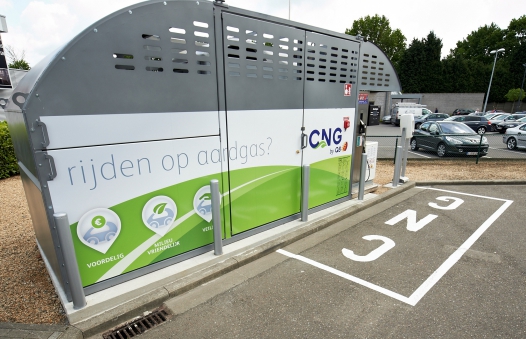Flanders Leads Way in Belgian NatGas Vehicles
More gas fuelled vehicles have become operational in Belgium since the start of this year than in the whole of last year and most of the growth was in Flanders, according to the federal government’s transport ministry.
Belgium is densely criss-crossed with roads, but investors have been reluctant to build filling stations for vehicles that run on compressed or liquefied natural gas as there were not enough of them. Conversely, road haulage and other companies are reluctant to buy gas-fuelled vehicles, because of the distance between stations – compared at least with Germany or The Netherlands. This situation is changing.
In the year to mid-August, 717 new gas fuelled vehicles became operational. In 2016 there were only 306. In the federal capital, Brussels, there probably will be stagnation this year. With 17 new vehicles operational by August 12, it will be difficult to match last year's 29. Wallonia however has already seen an increase to 21, about 31% more than during full-year 2015.

Filling station in Schoten, Flanders, Belgium (Credit: Q8)
But the real growth area is Flanders, with 261 new CNG-fuelled cars in 2015 and 679 (+60%) in the year to date. This is partly the result of a long-term plan by distribution grid operator Eandis to promote the use of CNG-fuelled vans by local authorities. Eandis gave them the opportunity to use them freely for several months and offered financial support to install local, private 'slow' filling stations.
However, the recent growth rate for electric and hybrid electric cars is much more impressive: so far this year about 9,500 new such cars have been registered. Today, about 3% of all new Belgian cars are powered by electricity. In Flanders, new gas fuelled cars have a share of 0.27%, in the other two regions this is less than 0.05%. But most electrical cars are passenger cars, while most CNG-vehicles are delivery vans or trucks and all LNG-vehicles are trucks.
Public filling infrastructure
There are only two public LNG-filling stations in Belgium, both of them in Flanders. "There also are 64 CNG-filling stations," says Didier Hendrickx, president of the Belgian Natural Gas Vehicles Association (NGVA). "57 in Flanders, six in Wallonia and one in Brussels. We expect some thirty more stations will be operational by the end of this year." He said at the end of 2015, Belgium had about 2,700 vehicles powered by natural gas on the roads and now there are 4,500.
At the end of June, Carlo Di Antonio (Centre Democratic Humanist party), the Walloon minister for the environment, finalized a coordinated legal framework to allow subsidies for the installation of new public CNG-filling stations as a part of his political ambition to make the region greener.
The new legislation makes it possible to build new stations, to adapt existing stations for the use of CNG and for private companies and even for private citizens to install such a station on a company site or near their house. "The use of CNG makes it possible to cut CO2-emissions by12 to 25%, compared with a diesel or a petrol engine. The emissions of nitrogen oxides are even 60% lower than for diesel Euro 6 engine."
Koen Mortelmans




